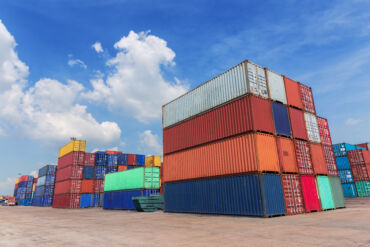The COVID-19 pandemic and resulting economic upheaval has clearly exposed the vulnerability of global supply chains and highlights the dangers of relying on the manufacturing facilities of a single country, China.
When you hear the word “coronavirus,” what comes to mind? Empty store shelves, daily news briefings about flattening the curve, or perhaps cost-cutting measures at your company? If you are a trade professional, what should come to mind is how coronavirus is disrupting global supply chains.
The escalation of the COVID-19 pandemic has increasingly exposed the vulnerability of our supply chains due to their reliance on a single country’s manufacturing facilities. China largely was seen — and still is seen — as a country made up of a low-cost workforce with mature manufacturing facilities, both helping to reduce production costs and increase profit margins for companies that produce and source goods there. Given the number of companies that source products in China, the effect of COVID-19 on supply chains is profound.
Companies are now acknowledging that reliance on any single country is unwise, sparking discussions about “western companies’ reliance on China,” according to The Financial Times. Companies in all industries — from automotive to electronics to apparel and footwear — are reeling from the effects the pandemic has had on manufacturing in China. Larry Fink, CEO of BlackRock told The Financial Times, “I do believe there’s going to be a review of supply chains at every company in the world.”
We are not so naïve to suggest that manufacturing will move from a country such as China with low-cost labor and mature factories, even with the current viral disease and despite previous efforts to do so, according to the The Wall Street Journal. As new COVID-19 cases slow in China, businesses are beginning to re-open their factories there. However, there are labor shortages because demand is high even as workers must comply with new rules to avoid re-igniting the pandemic. That said, we should face the fact that this concentration comes with risk that is now evident, especially when there is no Plan B. If China or any country on which companies rely for the overwhelming majority of their production collapses we will face both a local humanitarian crisis and a global supply chain disaster as industries are unable to fill orders, reported the The Wall Street Journal.
Finding more baskets for your eggs
Companies and their logistics chains are not prepared for such disruption. They have seemingly forgotten the old and proven proverb, “Don’t put all your eggs in one basket.” Future supply chain models should spread the eggs across multiple baskets — i.e., development of suppliers in alternative countries.
One option is to parallel the technology industry’s reliance on disaster and recovery plans which, in our opinion, should be a key part of the production and supply and logistics chains of global companies affected by this pandemic shutdown.
For those who are less familiar with the IT industry, we take seriously Murphy’s Law — “Anything that can go wrong, will go wrong” — which, in this case, requires data access links to be redundant and have different communication methods, data and servers to be replicated in different locations and sometimes different countries, and regular backups to be performed. This approach protects users of the software and, by extension, the IT owners who scramble to fix problems when redundancy is not in place.
The escalation of the COVID-19 pandemic has increasingly exposed the vulnerability of our supply chains due to their reliance on a single country’s manufacturing facilities.
Similarly, we should have redundant suppliers in supply and logistics chains. This could mean engaging factories in different countries that make some of the same parts, components, or finished products. Alternatively, a company could set up factories in locations that depend on different means of transport, thus mitigating possible obstacles created by problems including strikes, pandemics, and revolutions.
Another surprising factor in this crisis is the lack of pre-conceived action plans both from companies relying on a single supply chain and governments lacking scenario analyses that examine the causes and effects of a major disruption to production and transport. Governments around the world have responded at times in an uncoordinated matter, generally unable to present Plan B — perhaps because Plan A wasn’t really a plan of action.
Now is the time to determine how to create global fast-tracks within existing logistics chains so that, in the event of an emergency, vital supplies (such as masks, respirators and medicines) would continue to move quickly around the planet.
Consider if we had the equivalent of a Customs Trade Partnership Against Terrorism program in place to move goods between countries quickly, safely and predictably, as well as multiple distant and redundant suppliers of raw materials to spread around the eggs. How would that affect the current scenario?
Public and private entities should look at the pandemic as a unique opportunity to identify vulnerabilities in logistics and production chains and establish prevention protocols in the same way companies today manage their data.









